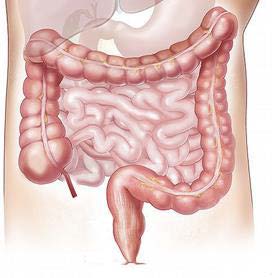Non-invasive diagnosis and treatment monitoring of inflammatory bowel disease

Tech ID
20-047
Inventors
P. Britz-McKibbin
N. Pai
Patent Status
US and CA national phase
Stage of Research
Proof of principle data available
Contact
Sunita Asrani
Associate Director
Business Development and Copyright
Abstract
Inflammatory bowel disease (IBD), including Crohn’s disease (CD) and ulcerative colitis (UC), is an idiopathic chronic gastrointestinal (GI) condition that affects pediatric populations with about 20- 30% of IBD patients experiencing their first symptoms before the age of 18. Current procedures dedicated to diagnosing the disease rely on invasive and expensive endoscopic imaging and tissue biopsies that can lead to indeterminate results. New insights into the distinctive pathophysiology of IBD are critical for early detection and optimal treatment strategies for individual patients.
McMaster researchers have developed a method to differentiate between UC and CD through a urinary sample. Researchers have determined distinct urine-based biomarkers and metabolic phenotypes of IBD patients thereby permitting differentiation between CD and UD. This allows for earlier diagnosis and the facilitation of treatment monitoring while also potentially avoiding the need for invasive colonoscopic imaging and tissue biopsies.
Applications
Medical Applications:
- Non-invasive screening
- Differential diagnosis of major pediatric IBD sub-types
- Early detection and optimal treatment strategies
- Enable better screening and diagnostic testing for IBD.
Advantages
- Non-invasive approach for UC and CD diagnosis.
- Cost effective compared to current expensive and risky detection methods for patients [prone to infections/ complications], especially children.
- Decreased diagnosis time compared to current diagnostic algorithms for IBD which are lengthy [delays to treatment] and prone to error since they are dependent on histopathology examination and can result in ambiguous diagnoses.
- Urine is a biofluid that can be readily collected to allow for early detection/screening of IBD with improved diagnostic accuracy, as well as being more amenable to treatment monitoring of disease progression based on repeat urine collection.
- Currently, there is no other validated blood or urine-based biomarker that enables reliable differential diagnosis of Crohn’s disease from ulcerative colitis.

